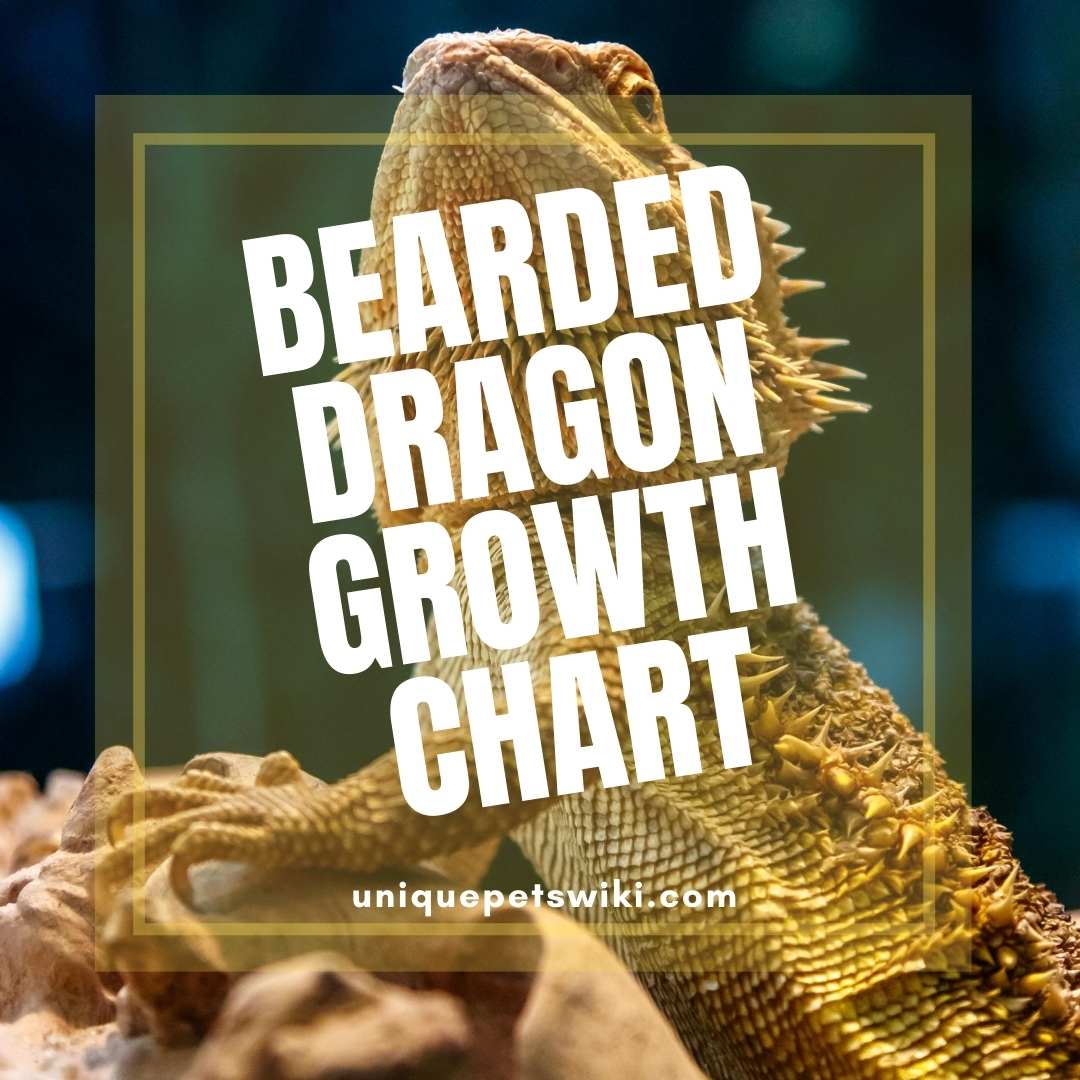It is always good to know whether your beardie is growing at a reasonable rate or not. A bearded dragon growth chart can act as a perfect guideline to make the comparison.
Many dragon keepers are always asking whether their pet is too small or big, but I’m worrying you might not get a straightforward answer. The reason for that is because several factors affect how a dragon grows and make its growth rate vary.
I’m going to talk about the beardie growth chart, and we’ll get to explore the beardies’ growth.
Contents
What is the Bearded Dragon Growth Chart?
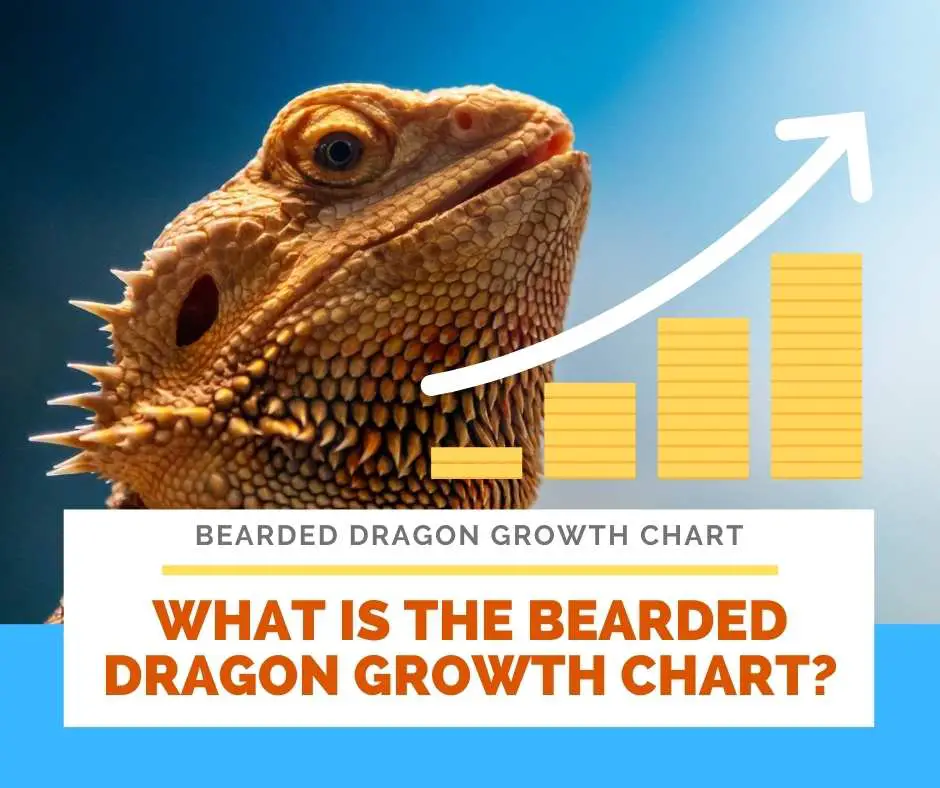
The growth chart consists of the growth records, which show an estimate of the beardies’ maximum size and weight. When you are not sure how old your beardie is, the growth chart can be of great help.
You will only need to take your pet’s measurement from head to tail and use the value you get to check on the approximate age of the beardie on the growth chart.
If you doubt that your lizard is growing abnormally, either too slow or is becoming too big, you can also use the details on the chart and compare. But remember, no bearded dragon is the same as another.
The rate at which your dragon grows is quite different from another dragon, always keep that in mind. Some dragons tend to grow rapidly, while others pretty slowly. It all depends on various reasons that we are going to see further in the article.
Sometimes you may find yourself comparing the way your pet is progressing with other beardies of the same age, but this might not be a good idea. As I have said, no beardie is the same as another.
The best thing to do is to check whether your pet has a steady weight gain. You can choose to do that by weighing the beardie probably every week and also check on its length.
Keeping your records is more vital because you can always refer to them whenever in need. Below is how a bearded dragon growth chart looks like, check it out and remember that the values are just an estimate.
| Age | Length (inches) | Weight (grams) |
| 1 month | 3-4 | 4-6 |
| 2 months | 5-10 | 8-39 |
| 3 months (Juvenile) | 8-12 | 22-119 |
| 4 months | 9-12 | 41-115 |
| 5 months | 11-16 | 102-115 |
| 6 months | 11-18 | 183-188 |
| 7 months | 13-18 | 230-280 |
| 8 months (Sub Adult) | 14-20 | 252-327 |
| 9 months | 16-21 | 280-358 |
| 10 months | 16-22 | 296-360 |
| 12 months | 17-24 | 350-465 |
| 12 months + | 18-24 | 380-510 |
Factors Affecting Bearded Dragon Growth Rate
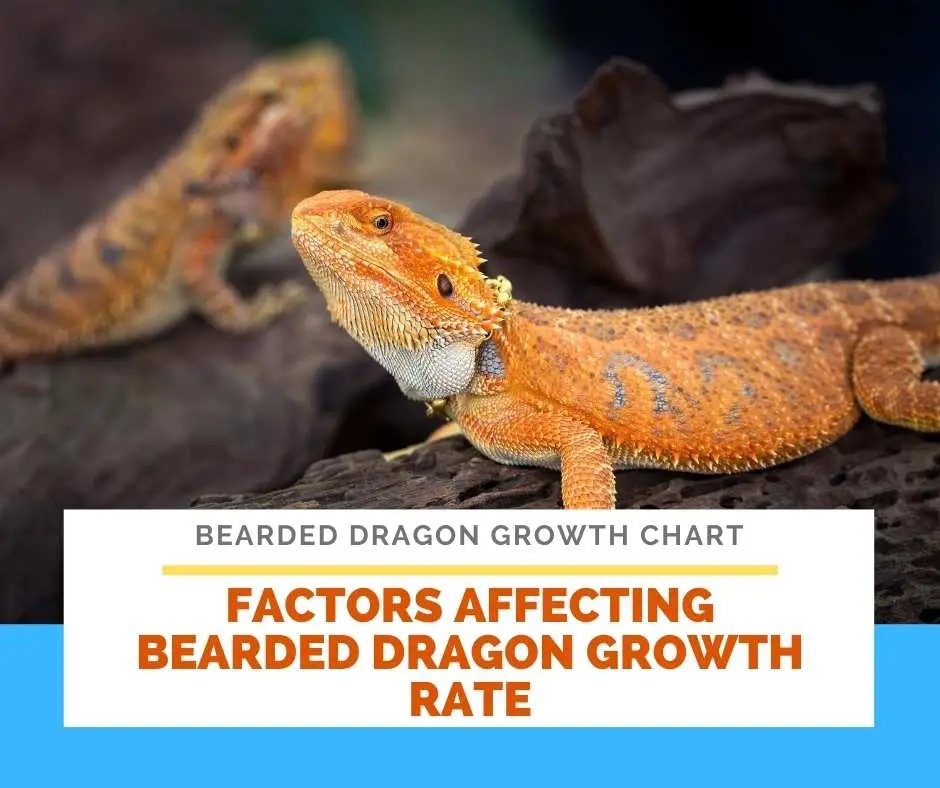
How big a bearded dragon can get is directly affected by a couple of factors such as;
- The species or breed.
- Sex or gender.
- Environment or habitat.
- Diet.
- Parasites and diseases.
- Genetics.
Continue reading to know how some of these factors affect growth rate in beardies and how to ensure that your pet attains its original intended size.
Since you can control the majority of the above factors apart from species, genetics, and gender, how your beardie will look depends majorly on your level of care.
Bearded Dragon Species and their Sizes
There are eight species of bearded dragons. For those who have not come across these species, I have listed them below.
- The Pogona vitticeps (Central bearded dragon) -It is the most common, and the beardies will grow up to around 24 inches long.
- The specie Pogona minor (Dwarf bearded dragon) -They are rare, and can reach up to 14-18 inches.
- This specie Pogona barbata (Coastal or Eastern bearded dragon) – Can grow up to 24 inches long.
- Pogona minor minima (Western bearded dragon) – They are rare species and can grow to around 12 inches long.
- Pogona microlepidota (Drysdale river bearded dragon) – This species is most uncommon and is the smallest. It can reach up to 4-6 inches.
- The specie called Pogona nullarbor – It can go up to 14 inches long.
- Pogona minor mitchelli- Also, they are not common, and mature ones can measure 18 inches.
- Pogona henrylawsoni (Lawsons bearded dragon) – These beardies will get up to 12 inches in length.
Sex or Gender Size Differences
Generally speaking, males are larger than females and are not only when it comes to the beardies but also with most of the animals.
In all species of bearded dragons, you will notice they are different in terms of stature; the males are longer and have larger heads than the females.
Bearded Lizard’s Size Depending on the Diet
Bearded dragons are omnivores, and they can feed on a variety of vegetables and insect feeders. If you want your pet to stay healthy, then you must feed it correctly with a healthy diet. A dragon that feeds well also tends to grow faster and larger.
In contrast, if your pet is not getting the right nutrients, it is one way to suppress its growth. It will not grow as expected, but instead, become malnourished.
If you own a hatchling beardie, this is the most critical stage, and it requires a lot of special care and your attention. If the babies do not receive the necessary nutrients, it can significantly affect how they will grow to be tomorrow.
Bearded Dragon Size Based on the Habitat
The conditions in the habitat can determine how a bearded dragon will grow and develop. If you suspect your pet to be growing slowly, maybe the problem is from the environment. A suitable environment allows a beardie to grow to its maximum size.
For instance, baby bearded dragons are growing so quickly, and they require sufficient space to enhance growth. When the tank is too small, first, it will induce stress, and the beardie will not grow to its maximum size.
Always make sure you provide a suitable enclosure, proper UVB lighting, correct temperatures and humidity, ideal substrate, and the right accessories to your pet. This helps the beardie to grow and stay healthy because it is getting all it needs.
Genetics
Genetics is something that we cannot control and it has an impact in all animals and humankind. It is the reason why there are larger and smaller beardies that may be of the same sex and even age.
The babies inherit genes of different traits from their parents. If the parents are huge lizards or are carriers of that trait, they will pass on those genes to the offspring. Such offspring will grow to be larger lizards.
On the other hand, beardies that are smaller in size are like that because of the genes they inherited from the parents. Genetics also has to do with other traits like color, body pattern, and more.
Bearded Dragon Size Based on Diseases and Parasites
Diseases affect the overall health of a bearded dragon and also reduce how fast it can grow. This is because, in most cases, sick beardies do not eat regularly, and that means that the body is not getting the nutrients its body demands for effective functioning.
Generally, if a beardie gets sick at an early age and stays for a longer time in that condition, growth declines. This means that the lizard will not reach its maximum size. That’s how dangerous diseases can be, and they have negative impacts at any stage.
Parasites are also severe and can lead to diseases, cause stress, decrease appetite, and affect the growth of your beardie.
Is Your Bearded Dragon Not Growing or Gaining Weight? Find Out Why
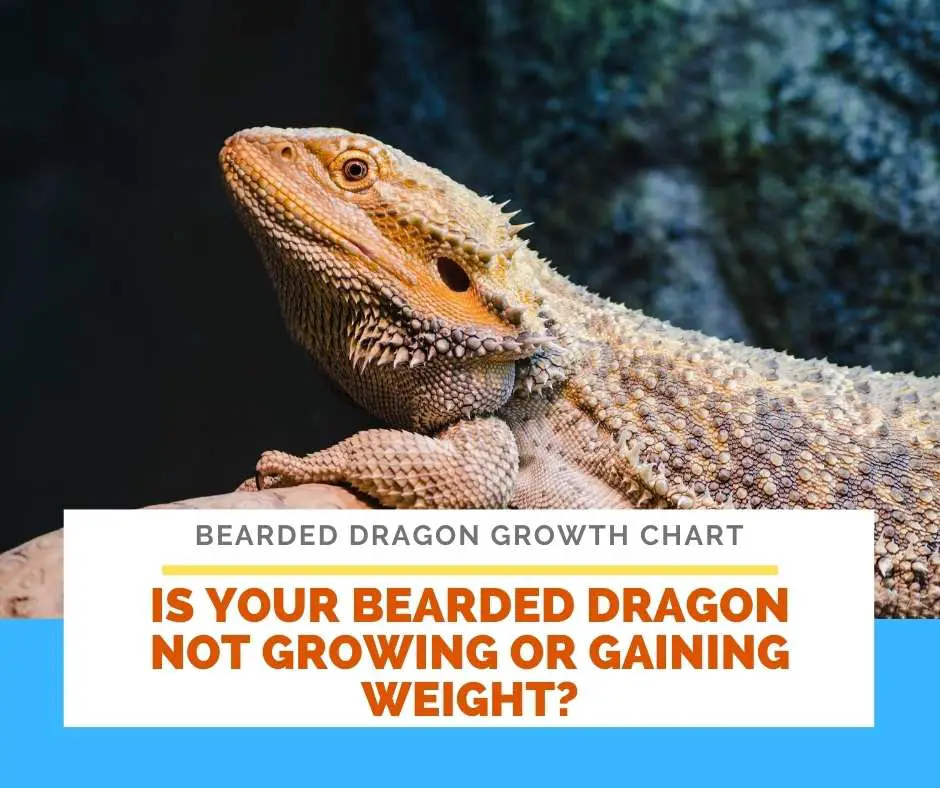
If you find your beardie to be below average in weight and size, it can be due to a variety of factors. The potential causes of this problem can be a poor diet, unsafe environment, among others.
Bearded dragons require adequate UVB light for effective digestion of food. Lighting is necessary for the beardie to absorb calcium from the diet. If you don’t provide the right UVB lighting, there will be no absorption of calcium leading to weak and brittle bones, which results in stunted growth.
When it comes to diet, baby bearded dragons need a high amount of protein to grow big and strong. If they don’t get a well-balanced diet, it will significantly affect their health and also undermines their growth.
Brumation can also result in stunted growth, especially to the young beardies. During that period, when the beardies are in a deep sleep for a long time, they don’t eat most of the time, and they lose weight. It is not a good thing to let a bearded baby dragon go into hibernation.
You can do that by keeping the temperatures in the habitat where they should be year-round both in daytime and night. Also, ensure there is a normal lighting cycle, which is usually 10-12 hours of light each day.
When is a Bearded Dragon Fully Grown?
Bearded dragons tend to grow quickly, and the majority of them reach maximum size by 18 months. However, how fast they will grow depends on the factors we have discussed above in the article, that affect growth.
The weight of the bearded dragons when they are fully grown varies greatly and can range from 283- 510 grams or even more depending on your bearded dragon. Mature and healthy dragons should look stocky but not fat.
Most dragons measure 18-24 inches long when they are fully grown, but other breeds like the German giant can go up to 32 inches, and they also record the highest weight.
Wrapping Up
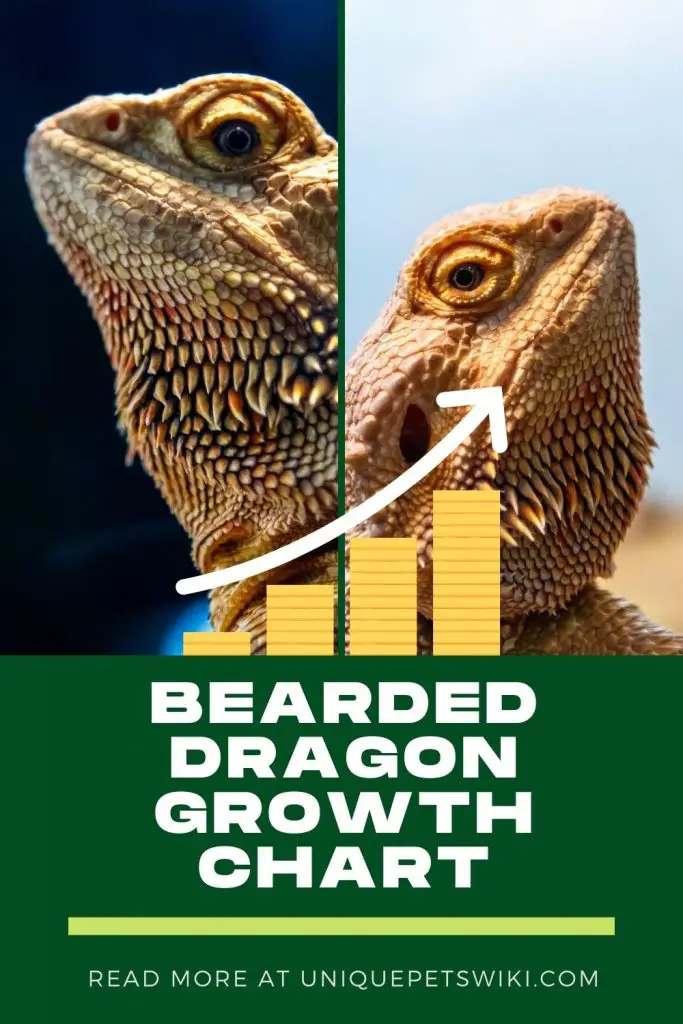
Now, we have come to the end of the article, and I hope you found it insightful. If you have a beardie, just know that there is none like it, all dragons are unique in themselves.
Some beardies will grow to be big and others quite smaller, but they are all looking good and healthy; it is normal. The only time to worry is when your pet is below average in weight and size, you can know that by referencing on the bearded dragon growth chart.
